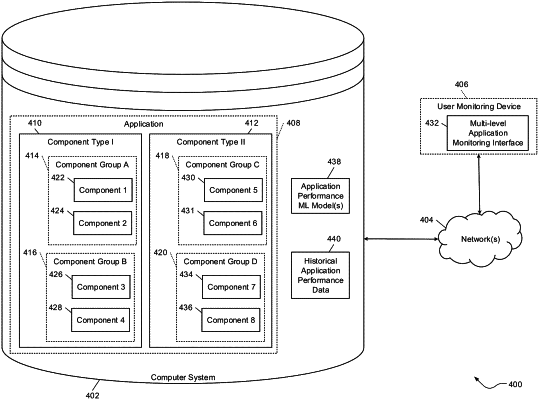| CPC G06F 11/3409 (2013.01) [G06F 11/3055 (2013.01); G06F 11/3457 (2013.01); G06F 17/18 (2013.01); G06N 20/00 (2019.01); H04L 41/145 (2013.01); H04L 43/045 (2013.01); H04L 43/08 (2013.01)] | 20 Claims |

|
1. A computer system for automated detection of anomalous performance of application infrastructure components, the computer system comprising:
a memory device configured to store at least one machine learning model and measured historical performance metrics for the application infrastructure components; and
at least one processor communicatively coupled to the memory device, the at least one processor configured to:
train the at least one machine learning model using the measured historical performance metrics to generate key performance indicators associated with the application infrastructure components;
generate an element for display in a multi-level application monitoring interface, wherein the element corresponds to a first component of the application infrastructure components, and wherein the element includes a status indicator;
use the at least one machine learning model to generate the key performance indicators for the first component, based on a reporting window time period associated with measured performance metrics and an outlier threshold value;
in response to generating the key performance indicators for the first component, automatically present the key performance indicators for the first component using the element including the status indicator, via a display device visible to an operator and communicatively coupled to the at least one processor; and
in response to the key performance indicators indicating a performance anomaly condition for the first component, automatically perform a self-healing operation associated with the key performance indicators, wherein the self-healing operation includes:
(i) automatically modifying operation of the first component, including at least one of:
restarting the first component, and
starting a new instance of the first component, and
(ii) automatically generating a ticket request to monitor the operation of the first component.
|